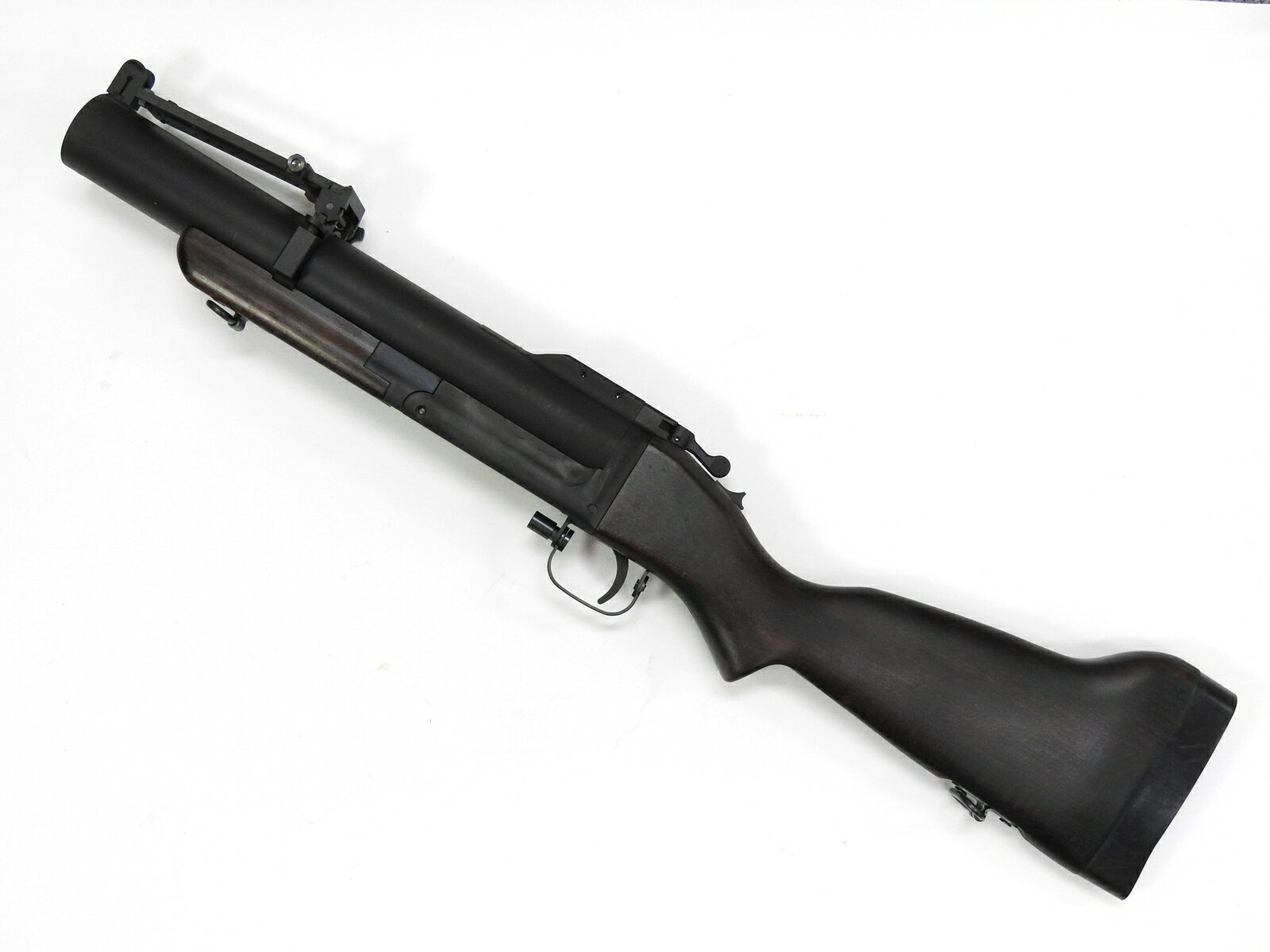

In 1961, the first M79 grenade launchers were delivered to the US Army. With a new sight, the XM79 was officially adopted as the M79 on December 15, 1960. Unable to solve the problems with the multi-shot T148 launcher, the Army adopted the S-5 as the XM79. This was refined into the S-5, which resembled an oversized single-barrel shotgun. The other design was a single-shot break-open, shoulder-fired weapon, the S-3. One of the launchers at Springfield Armory was the three-shot "harmonica" T148 (not to be confused with the later, underbarrel XM148), which did see some limited production and fielding in Vietnam, but problems with the three-round magazine prevented widespread acceptance. Project Niblick created the 40 x 46 mm grenade, but was unable to create a satisfactory launcher for it that could fire more than a single shot.
M79 grenade launcher portable#
It is also capable of firing less-lethal riot control ammunition such as baton, beanbag and CS gas rounds.The M79 was a result of the US Army's Project Niblick, an attempt to increase firepower for the infantryman by having an explosive projectile more accurate with further range than rifle grenades, but more portable than a mortar. The system can fire a wide variety of rounds, from standard HE to more exotic loads like buckshot and parachute flares. The round uses an inertial arming system requiring it to rotate a certain number of times before the fuze is engaged in the armed position: as a result, the grenade will not explode at ranges less than 30m (33 yards). The effect of this is to slow down the velocity of a small amount of high-powered propellant, allowing for a relatively gentle launch and thus more manageable recoil. This round is built around the high/low system, with a small "high-pressure" propellant chamber topped with a bursting disc inside the larger shell case, which acts as the "low pressure" expansion chamber.
M79 grenade launcher manuals#
The sight is a flip-up ladder-type adjustable for windage and marked for ranges from 75m to 375m in 25-meter increments, and field manuals also provided instructions for mounting the grenade launcher sight for the M16 to the weapon following the introduction of the M203. The M79 is functionally very similar to a break-open shotgun: it is breech-loading and cocks on opening, with a thumb latch to open the breech. The tube magazine fed China Lake Launcher, while it could essentially be described as a pump-action M79, is not particularly related to the M79 mechanically. Users would sometimes saw down the stock and/or barrel to make it handier.įollowing Operation Neptune Spear in 2011 it was revealed that American DEVGRU operators use a pistol-length M79 variant fitted with a reflex sight and sling mount on the shortened stock, affectionately referred to as the "pirate gun." Over time it was largely replaced by the M203 (which had almost exactly the same origins as a SPIW spinoff project) in most uses due to the latter not requiring the removal of a rifleman from the squad, though it still found use in niche roles due to its superior accuracy and range over the M203. The M79 is relatively light, but at 29 inches long it could only really be issued to dedicated squad grenadiers. It first served in Vietnam and was well-liked by troops, often referred to as "the platoon leader's artillery" and acquiring nicknames like "blooper" and "thumper" due to its distinctive firing sound. With the addition of a redesigned sight, it was adopted as the M79 in December 1960. It was clearly superior to the three-round magazine-fed T148 grenade launcher (not related to the XM148) that it competed against, and a refined variant, the S-5, was chosen by the US Army for testing as the XM79.

This was a single-shot, break-open weapon called S-3 that resembled an oversized sawed-off shotgun. While technical issues dogged the main project, a grenade launcher prototype from Springfield was pulled aside in an attempt to develop a standalone weapon to fire the round NIBLICK had created. The M79's development spun off from the SALVO advanced rifle program. From this came the idea of designing an infantry launcher for this round, with the goal being to design a weapon with greater range than a thrown hand grenade and greater accuracy then a rifle grenade launcher, while having it remain more portable than a light mortar. The round for the M79 was developed in 1952 under project NIBLICK, with the concept being to use the high-low recoil mitigation system developed by Nazi Germany in WW2 to produce an effective high-explosive round that could still be shoulder-fired by a single man. The M79 grenade launcher is an American held-held single-shot grenade launcher, and one of the first portable grenade launchers in the modern sense of the term.


 0 kommentar(er)
0 kommentar(er)
